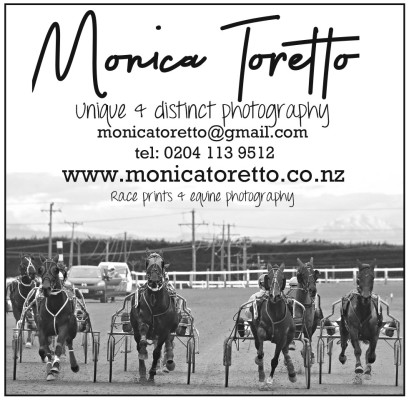Earl Says Southern Harness Model Is Working
Southern Harness Board chairman John Earl has always been a straight shooter, never shying away from important or confronting issues.
And he’s been one of the key driving forces behind the success of the Southern Harness model, which has now been in place for four years.
The model consists of ten clubs which collectively run forty four race meetings per season. Southern Harness has three paid staff members, three board members who are voted on by the clubs, and three people appointed to oversee all of the clubs’ programming.
“It’s a small and simple structure that can make quick decisions as changes are being made all the time,” Earl says.
Another strength of the Southern model is it that the clubs are bulk funded by HRNZ.
“It’s created lots of positive outcomes for us because we can adopt tight budgets and clubs know their future is sustainable.”
Earl says the fact that 87% of this fund is returned to owners in the area is a reflection of the positive impact of the model – “As opposed to clubs retaining stake money to balance their books and making profits.”
Earl states that having a single programming group has enabled Southern Harness to use the current rating system to its advantage.
“The system has come under a lot of criticism but no system will work properly if clubs are in competition with each other. We endeavour to do what’s best for our horse population. Self-interest isn’t tolerated,” he said.
Earl says the template Southern Harness is using is working and that the lockdown has proved that. The Southern Clubs lost ten of its original races days, but the revised calendar sees ten race meetings returning to the province between 30th May and the end of July.
“The funding (for these meetings) is more than we anticipated and because the ten clubs have been under the one umbrella we’ve been able to put money aside for a rainy day.”
He says this money will be used to top up stakes to pre-lockdown level for these end of season meetings.
Earl says driving turnover has always been a concern for Southern Harness, as it is with most regions.
“The TABs only input to this problem was to fill the fields up. But this wasn’t enough information for us. Using mobile starts, looking at the stipes reports and using close ratings bands, it became clear to us that this model is working. The punter wants competitive racing.”
Earl says with stakes dropping it might be time to drop the two percent of the stakes pool currently paid to runners that finish further back than fifth.
“I’d like to see this replaced with a losing driving fee. The winning horse should be receiving more stakes. By paying stakes back to fifth and using the rating system, all horses get a chance to be competitive. If they aren’t competitive how can we sell our product to the punter?”
He says Harness Racing’s future is clearly in the hands of RITA.
“Let’s hope with a leaner meaner business model they can generate more profit for us out of their 2.77 billion gross turnover.”







